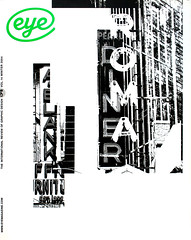Winter 2004
Canyons of your mind
Psychobox: A Box of Psychological Games
Edited by Mel Gooding<br>Redstone Press, £14.95Julian Rothenstein founded the Redstone Press in 1986 to publish Drawing Book – drawings and paintings done by his father, Michael, in 1912-17, between the ages of four and nine. A softbound book in a black paper portfolio, it was beautiful and quirky, perfectly pitched to delight eye and mind together. The same qualities have distinguished Redstone’s subsequent output: the collections of postcards and other ephemera, the calendars and the books in boxes, of which the Psychobox is, I think, the sixteenth.
Rothenstein’s values are in accord with those espoused by Surrealism in its heyday. They might be nutshelled by Lautréamont’s famous dictum (quoted on the cover of Redstone’s 1991 book box Surrealist Games): ‘Poetry should be made by all.’ Not that everyone would be equally adept at it, but Rothenstein is mindful that people sometimes make it unintentionally, when their minds are focused elsewhere, on devising psycho-diagnostic tests and tasks, for example.
The Psychobox is a collection of ‘tests, games, objects, images and documents assembled from the often hidden and sometimes strange histories of non-Freudian psychology,’ as Rothenstein’s regular collaborator, the writer, critic and curator Mel Gooding puts it. The box contains 48 full-colour cards with notes and commentaries on the back.
As well as their visual appeal, these exhibits – the drawing-completion test, the object and sequence-recognition tasks, the pattern blocks used in old IQ assessments, the inkblots, the optical illusions – were designed to be engaged with. They invite participation. This one, for instance, ‘used as a guide to occupational interests and employment suitability’ in the UK circa 1960: ‘Would you rather …
A. Write criticism of plays
B. Take crippled children to the seaside
A. Brush down horses and trim their manes and tails
B. Make aircraft propeller blades’
Gooding has pointed out elsewhere that the professional associations of ‘psychotherapists and psychiatrists, medical and quasi-medical’ which formed in the last century to defend and promote their views, ‘often behaved in the manner of those medieval guilds – called mysteries – one of whose prime functions was to preserve the secrets of the trade from the lay public.’
Knowing that the Psychobox contains material that was formerly ‘unknown outside clinical circles’ adds a frisson of transgression to its other attractions.
First published in Eye no. 54 vol. 14 2004
Eye is the world’s most beautiful and collectable graphic design journal, published quarterly for professional designers, students and anyone interested in critical, informed writing about graphic design and visual culture. It is available from all good design bookshops and online at the Eye shop, where you can buy subscriptions and single issues.

